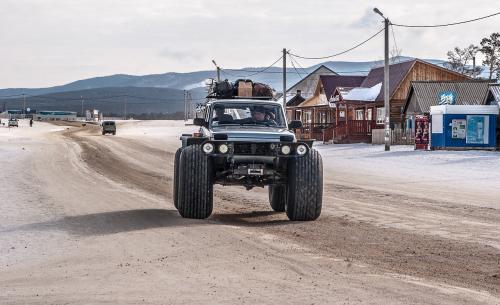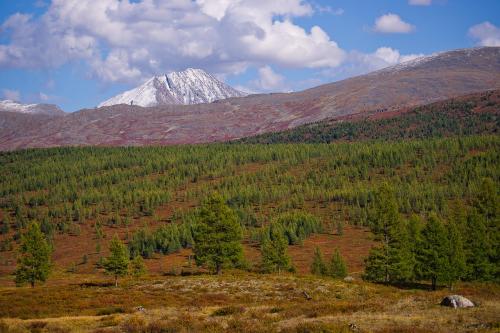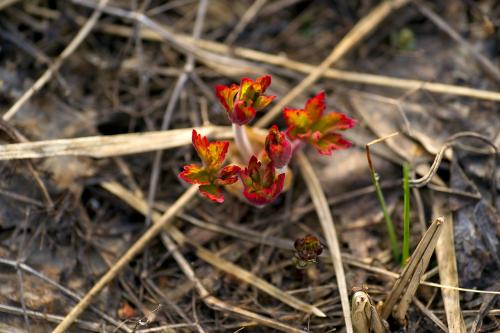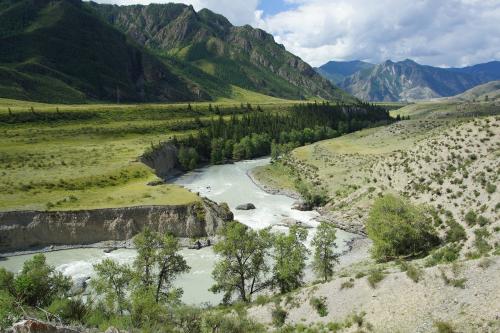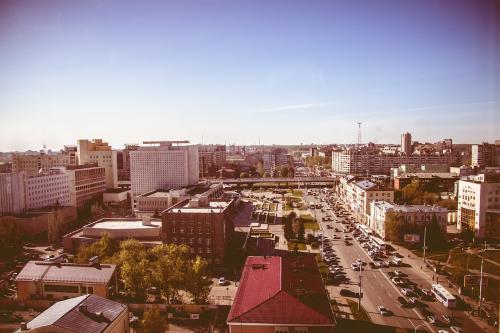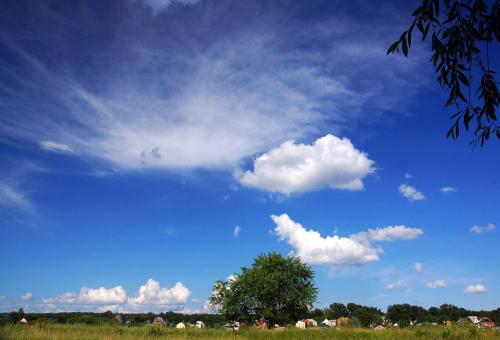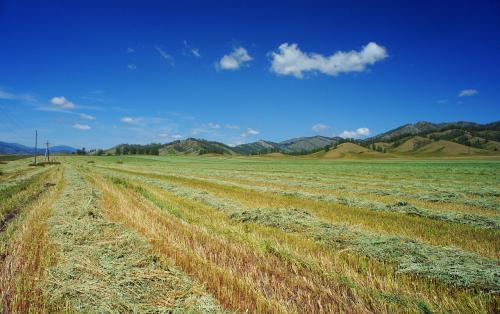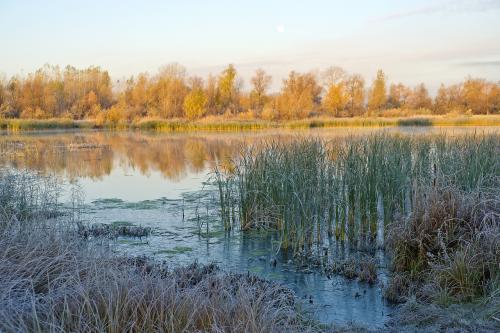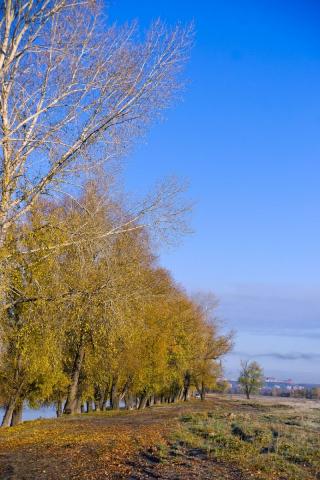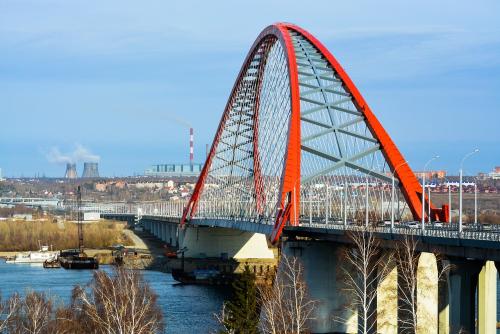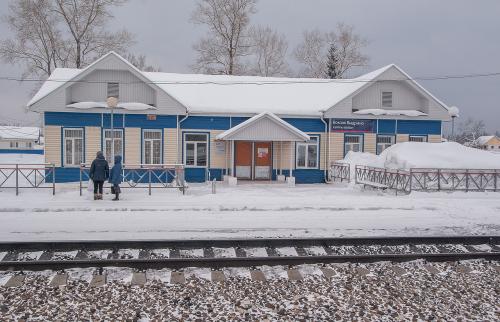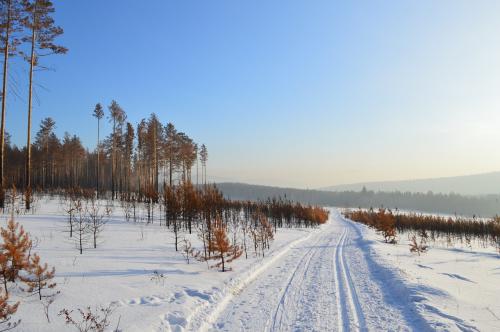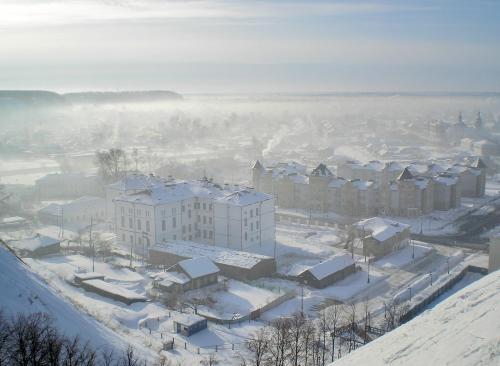Seasons in Siberia
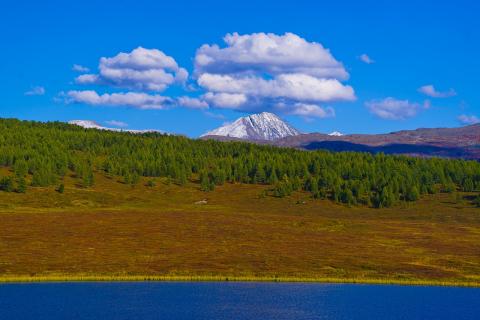
Siberia is a huge territory occupying the Northern part of Asia. Also Siberia occupies about 60 percent of Russia's territory, which is about 10 million square kilometers. The whole vast territory of Siberia lies in three climatic zones: Arctic, subarctic and temperate. All of Siberia is divided into two main parts: Western Siberia and Eastern Siberia.
The territory of Western Siberia is practically closed from the influence of Atlantic air masses of the Ural Mountains. The best access is provided with North and northeast winds blowing from the Arctic ocean and Eastern Siberia. These winds mostly prevail during the warm period (April-September) and bring cold Arctic air in the form of cyclones and anticyclones. Also in the warmer months on the territory of the region burst cyclones bringing Northwest winds to the European part of Russia. Another wind direction is from the South and South-West, i.e. from the territory of Uzbekistan and Kazakhstan, prevailed in the cold season and brings Asian dry air, and with it the clear and frosty weather.
The climate of Western Siberia is continental, continentality increases from West to East. In the same direction will increase the annual amplitude of temperatures.
It should be remembered that Western Siberia is the wetland a natural area of Russia. Huge total area of wetlands affects the humidity and temperature, especially in the summer. High humidity generally promotes a certain reduction of temperature, especially daily. This, in turn, leads to a decrease of the daily amplitude of temperature and, consequently, to a certain reduction of the influence of continentality.
In the cold season in Eastern Siberia, dominated by southerly winds, which brings the highs of Asia. The result of it is clear and frosty weather. In the warmer months Asian dry air is also fed to the territory of East Siberia, however, South winds are frequently replaced on the Eastern bearing sea air of the Pacific ocean and North, bringing cold Arctic air masses.
Seasons
Contents:
Spring in Siberia
Spring in Eastern Siberia late and short. Its beginning is marked by the establishment of a positive day temperatures. Almost throughout, it happens in the second half of April, but in the far North, the spring comes only at the end of may or even mid June when the snow melts and the daytime temperatures increase quickly.
Climate of the Spring Months
| March Max average t°: -4 °C (25 °F) Min average t°: -14 °C (7 °F) Sundial in the day: 3 hours Snowy days: 1 day Precipitation: 25 mm (1.0") |
| April Max average t°: +8 °C (47 °F) Min average t°: -2 °C (29 °F) Sundial in the day: 6 hours Rainy days: 2 days Precipitation: 26 mm (1.0") |
| May Max average t°: +18 °C (65 °F) Min average t°: +5.5 °C (42 °F) Sundial in the day: 11 hours Rainy days: 3 days Precipitation: 35 mm (1.4") |
(Omsk)
Spring Holidays
March-April – Easter Celebrations.
March 8 – Women’s Day.
April 1 – April Fool’s Day.
May 1 – Labor Day.
Summer in Siberia
Summer, as already mentioned, relatively warm, and in the South, in the steppe zone of Khakassia, Tuva and Transbaikalia, even hot. The average July temperature in the taiga zone ranges from +10-15 °C (50-59 °F) at its Northern limit to +18-20 °C (64-68 °F) in the South. Only in the mountains Yes, in the far North, in coastal tundra and on the Arctic ocean coast in July and August cool: at Cape Chelyuskin the average July temperature is only +2 °C (36 °F). However, on some days the temperature in the tundra can rise to +20-25 °C (68-77 °F), but these days in General a bit.
Climate of the Summer Months
| June Max average t°: +24 °C (75 °F) Min average t°: +11 °C (52 °F) Sundial in the day: 12.5 hours Rainy days: 3 days Precipitation: 37 mm (1.4") |
| July Max average t°: +25 °C (78 °F) Min average t°: +14 °C (57 °F) Sundial in the day: 11 hours Rainy days: 6 days Precipitation: 67 mm (2.6") |
| August Max average t°: +22 °C (71 °F) Min average t°: +11 °C (52 °F) Sundial in the day: 10 hours Rainy days: 3 days Precipitation: 50 mm (2.0") |
(Omsk)
Summer Holidays
June 6 – Pushkin’s Day.
June 12 – Russia’s Day.
June 27 – Youth’s Day.
July 7 – Kupala Night.
July 28 – Day of the Baptism of Rus’.
August 2 – Day of paratroopers.
Autumn in Siberia
The end of August for the most part, Eastern Siberia can be considered the beginning of autumn. Although during the day the sun is shining bright, the night is already the first ground frosts occur. Spring and autumn frosts significantly reduce the duration of frost free period. In the steppe regions since the end of may to mid September frost does not usually occur or are rare. The transition from autumn to winter faster than from spring to summer.
A large part of the precipitation in Eastern Siberia in the form of rain and snow, brought by air masses coming from the West and North-West. From the East the territory is fenced by a barrier of mountains, and the damp winds from the Pacific ocean penetrate only occasionally in the Eastern regions of Transbaikalia, where in the late summer of plentiful rain brought by monsoon winds.
Climate of the Autumn Months
| September Max average t°: +16 °C (61 °F) Min average t°: +5 °C (42 °F) Sundial in the day: 7 hours Rainy days: 2 days Precipitation: 30 mm (1.1") |
| October Max average t°: +6 °C (43 °F) Min average t°: -2 °C (29 °F) Sundial in the day: 4 hours Rainy days: 2 days Precipitation: 29 mm (1.1") |
| November Max average t°: -4 °C (24 °F) Min average t°: -12 °C (11 °F) Sundial in the day: 2 hours Snowy days: 2 days Precipitation: 31 mm (1.2") |
(Omsk)
Autumn Holidays
September 1 – Day of Knowledge.
October 5 – Teacher’s Day.
Last Sunday of November – Mother’s Day.
Winter in Siberia
Due to the constancy of the weather, great dryness of the air, the abundance of clear, sometimes Sunny days and lack of winds and low temperatures in winter are transferred relatively easily.
The inhabitant of Irkutsk or Chita considers bracing thirty-degree frost as commonplace, as a resident of St. Petersburg frost to -10 °C (14 °F). Getting off the train arriving from Moscow or St. Petersburg, do not immediately feel that the temperature is below -20 °C (-4 °F), as the light is not on-winter the bright sun, the air does not move, the sky is cloudless.
Climate of the Winter Months
| December Max average t°: -10 °C (14 °F) Min average t°: -18.5 °C (-1 °F) Sundial in the day: 1.5 hours Snowy days: 2 days Precipitation: 28 mm (1.1") |
| January Max average t°: -13 °C (9 °F) Min average t°: -22 °C (-7 °F) Sundial in the day: 2 hours Snowy days: 1 day Precipitation: 15 mm (0.6") |
| February Max average t°: -12 °C (11 °F) Min average t°: -21.5 °C (-7 °F) Sundial in the day: 2 hours Snowy days: ~0-1 days Precipitation: 13 mm (0.5") |
(Omsk)
Winter Holidays
December 12 – Constitution Day.
December 31-January 1 – New Year Celebrations.
January 7 – Orthodox Christmas.
January 14 – Old-Style New Year.
January 19 – Orthodox Epiphany.
February – Shrovetide.
February 14 – St Valentines’ Day.
February 23 – Day of the Defenders.
 Seasons of the Year
Seasons of the Year 